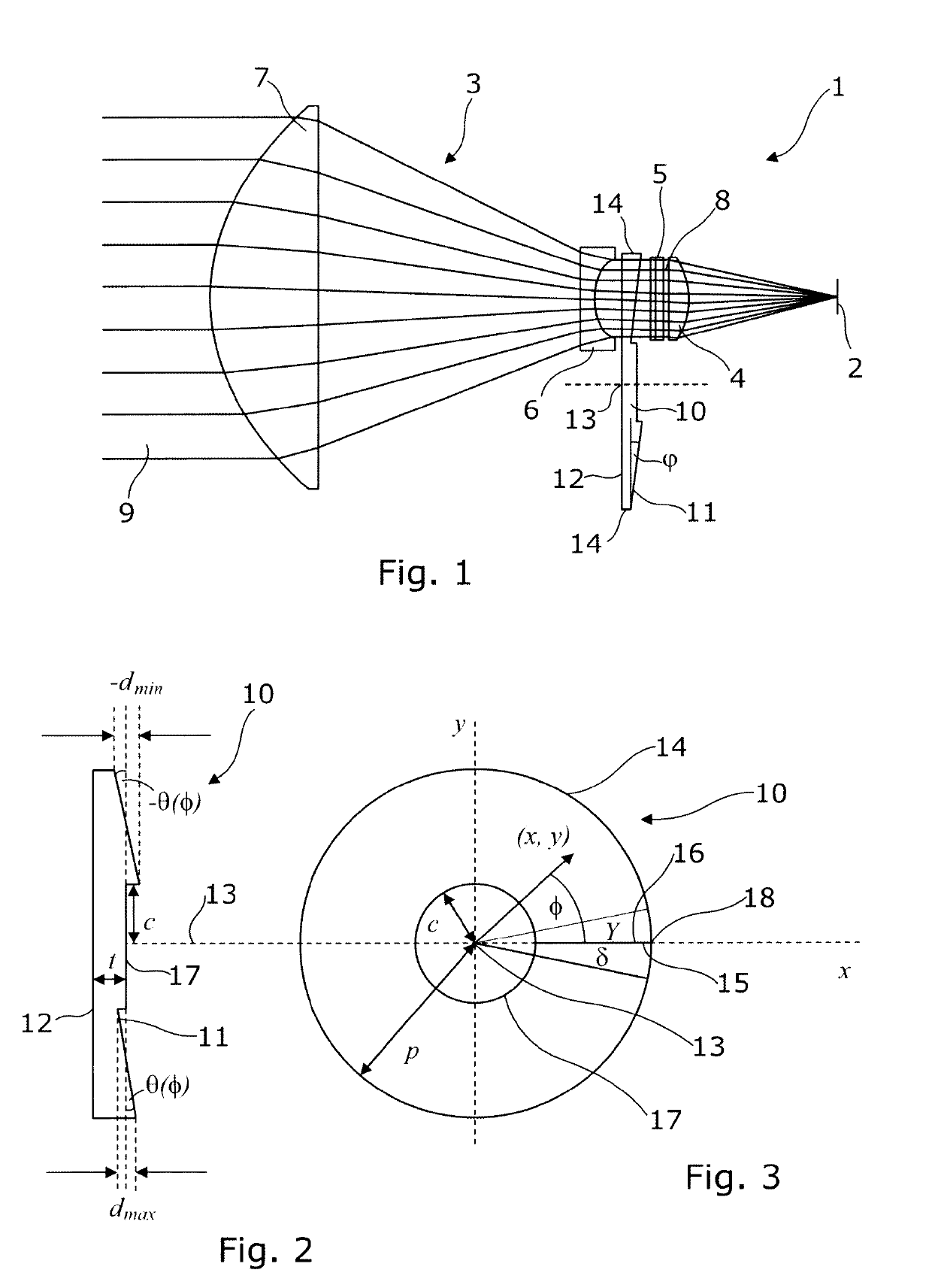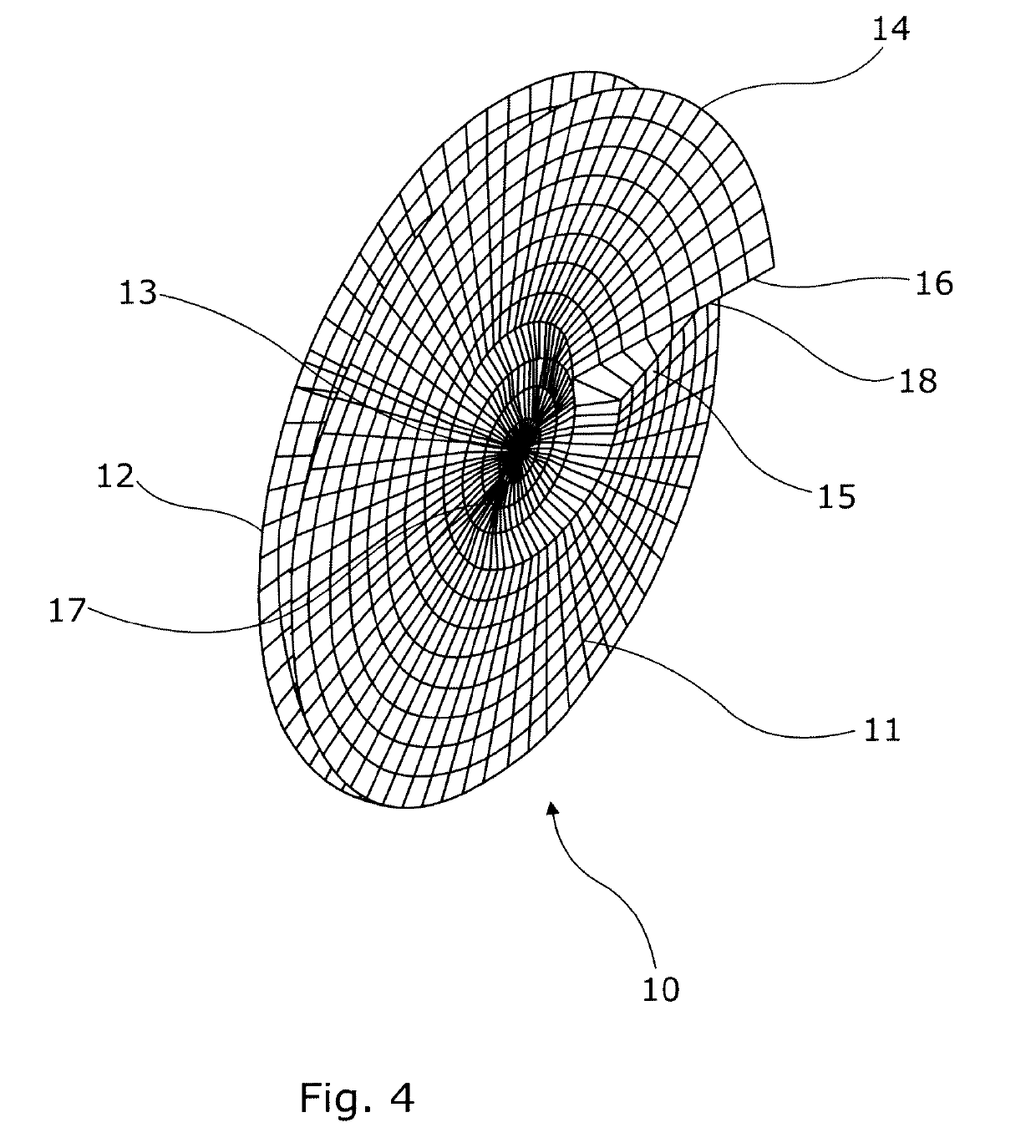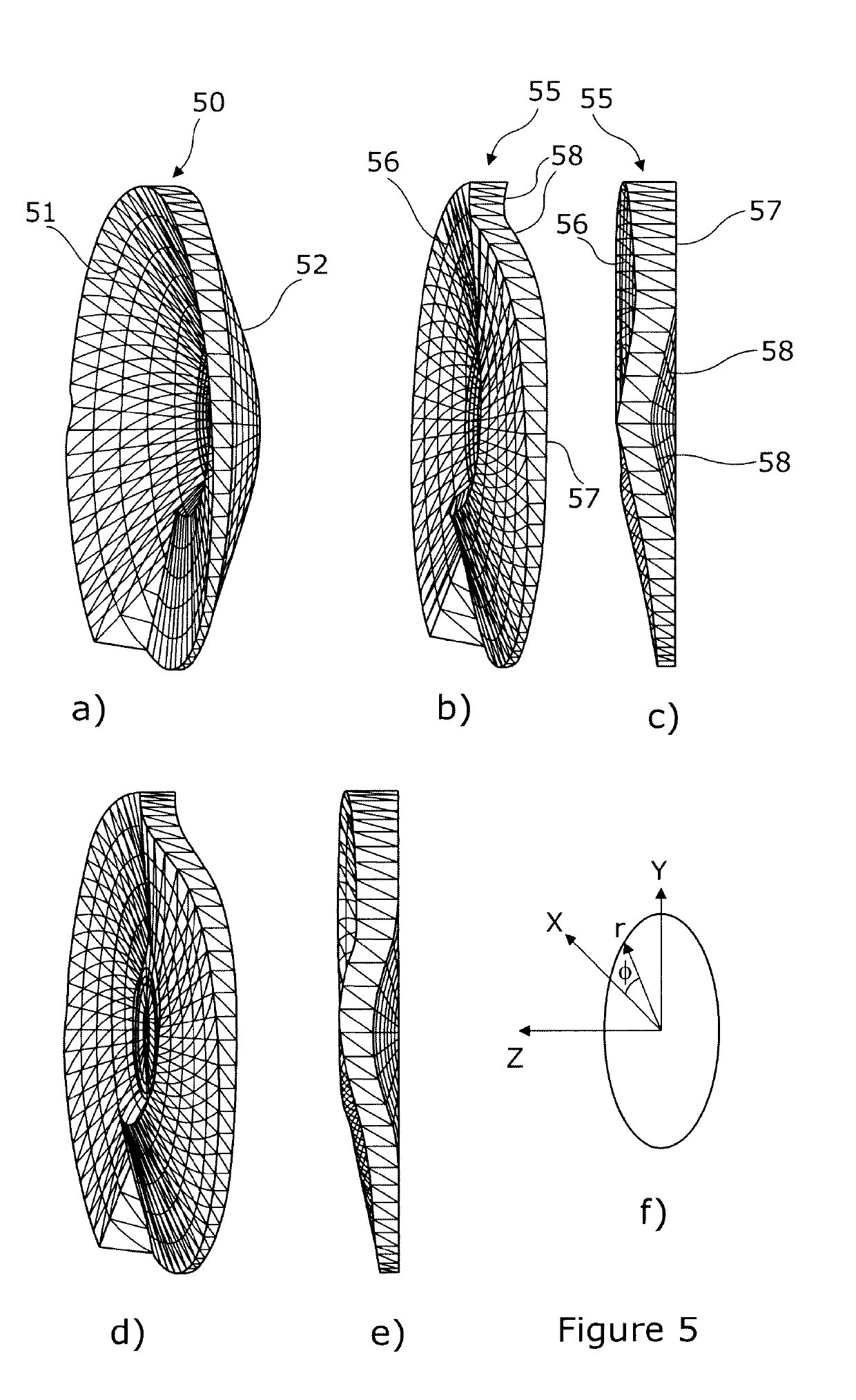Detection device
a detection device and detection technology, applied in the field of detection devices, can solve the problems of increasing the proportion of dead time (time), reducing the efficiency of the overall process, and high effective manual scanning time-consuming, so as to reduce vignetting and keep the size of the optics
- Summary
- Abstract
- Description
- Claims
- Application Information
AI Technical Summary
Benefits of technology
Problems solved by technology
Method used
Image
Examples
Embodiment Construction
[0057]In order to overcome the issues associated with increased sampling, signal to noise ratio, integration time and algorithm efficiency, the present invention proposes the use of a continuous scan created using a novel prism arrangement, as described in more detail below. A detection device for discriminating between different materials comprises an optical system having at least one optical focussing element and a receiving element. The receiving element is sensitive to millimeter-wave radiation, making it suitable for use in various applications where it is necessary to determine the presence of materials or to distinguish between materials. The optical system is arranged to focus incident energy from a scene onto the receiving element, and comprises a prism element in addition to a focussing element. The prism element has a first surface and a second surface, the first surface being opposite the second surface and positioned at an angle θ to the second surface. The angle θ var...
PUM
 Login to View More
Login to View More Abstract
Description
Claims
Application Information
 Login to View More
Login to View More - R&D
- Intellectual Property
- Life Sciences
- Materials
- Tech Scout
- Unparalleled Data Quality
- Higher Quality Content
- 60% Fewer Hallucinations
Browse by: Latest US Patents, China's latest patents, Technical Efficacy Thesaurus, Application Domain, Technology Topic, Popular Technical Reports.
© 2025 PatSnap. All rights reserved.Legal|Privacy policy|Modern Slavery Act Transparency Statement|Sitemap|About US| Contact US: help@patsnap.com



